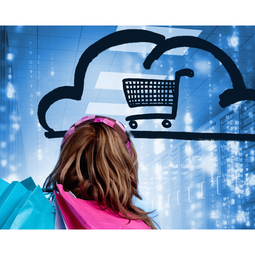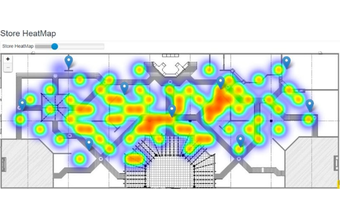
Published on 07/20/2016 | Strategy
The buzz about big data and the Internet of Things has reached mainstream retail. The proliferation of connected devices coupled with better, more affordable technology platforms will increase the rapid growth of IoT-enabled capabilities across industries. The IoT will be particularly disruptive to traditional retailers.
The IoT presents retailers with opportunities in three areas: customer experience, the supply chain, and new channels and revenue streams. In this guide, we will look beyond the future forecasts and focus on how early movers are leverage IoT in order to make shopping cheaper, more convenient and more compelling for customers.
#1 - Create a better customer experience with IoT
Sensors are now on the market that enable retailers to track customer paths through a store to identify differences in shopping behavior. This insight can help managers improve store layout, reduce customer frustration and optimize merchandise placement.
#2 - Increase supply chain effectiveness
Inventory shortages are a significant cause of lost sales and customer dissatisfaction. What if your shelves were stocked 100% of the time? Smart shelves alert employees to shortages before they occur, reducing manual work and giving staff more time to spend interacting with customers rather than managing inventory.
#3 - Identify new opportunities
Connected platforms give retailers new direct channels to customers, generating incremental revenues and a potential gold mine of customer date.
#4 -
#5 -
The Internet of Things presents an opportunity for retailers to develop a vastly improved ecosystem that connects physical and digital worlds, allowing bidirectional, real-time interaction with consumers both inside and outside the store.
Retailers can leverage the data produced by these interactions to improve the customer’s in-store experience. Hugo Boss has already deployed heat sensors in its clothing stores to track customer movements, which helps managers place premium products in high-traffic areas. Many retailers underutilize waiting areas outside changing rooms but heat maps indicate that these spaces are premium real estate in many retail environments.
The next step toward increasing visibility is customer segment maps. Heat maps provide a high-level understanding of where bodies are. They do not identify if the customers frequenting a section are teenage girls or their mothers. This data is tremendously valuable but also sensitive. Zebra Technologies allow retailers to link customer data to smart displays via beacons to push more tailored content within the store or via mobile phones.

Connected devices and products provide retailers with the opportunity to help optimize operations in the face of a more complex supply chain, increasingly important digital channels, and a more demanding customer. RFID technologies, for example, can improve the precision of inventory tracking. Data visualization technologies make it easier for employees to track products across the supply chain.
This service can be extended to customers — allowing them to track, for example, where a custom order is in the production and distribution process. More than 20 years after Adidas moved production activities from Germany to Asia, CEO Herbert Hainer unveiled the group’s new “Speed Factory” in Ansbach, Germany.
The 4,600-square-metre plant will provide highly customized shoes ordered directly online. The localization of manufacturing will cut inventory levels to near zero and drastically reducing both transportation costs and time from order to delivery.
The factory will deliver a first test set of 500 pairs of shoes in the third quarter of 2016 and large-scale production will begin in 2017. A second “Speed Factory” is due to open in the United States in 2017 and Nike also has plans to localize manufacturing in the United States and Europe.
The true power of the Internet of Things lies in the opportunities it presents to retailers to create new revenue streams or, in some cases, to build entirely new sales channels. We’re already seeing examples of retailers growing incremental revenues by expanding into new channels or creating new, high-margin service oriented products.
Home improvement and consumer electronics retailers are driving sales of new categories of connected devices — Home Depot already stocks more than 600 “smart” products in its stores. They can also tap into the data those devices provide to extend their touch into customers’ homes.
Amazon is on the cutting edge of this trend, positioning the Amazon Echo as a control and data analysis “platform” for the home. The online retailer also released the innovative Dash button, which sells for $4.99 and allows users to re-order a specified product with the click of a button. As of March 2016 Amazon had Dash Button’s for more than 100 products - with new brands including Brawny, Charmin, Clorox, Doritos, Energizer, Lysol, Peet’s Coffee, Playtex, Purina, Red Bull, Starbucks, Trojan, and Vitamin Water.
However, companies must carefully beta new ideas before broadcasting to a mass market. Coca-Cola’s experiment with vending machines that adjust pricing based on temperatures succeeded only in angering consumers and providing arch rival Pepsi with a social media coup. Consumers do not like negative surprises.